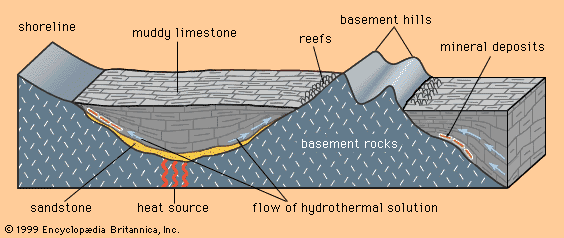
A radical new approach to analysing sedimentary basins also harnesses technology in a completely novel way. An international research group, led by the University of Sydney, will use big data sets and exponentially increased computing power to model the interaction between processes on the earth’s surface and deep below it in ‘five dimensions’.
As announced by the Federal Minister for Education today, the University’s School of Geosciences will lead the Basin GENESIS Hub that has received $5.4 million over five years from the Australian Research Council (ARC) and industry partners.
The multitude of resources found in sedimentary basins includes groundwater and energy resources. The space between grains of sand in these basins can also be used to store carbon dioxide.
“This research will be of fundamental importance to both the geo-software industry, used by exploration and mining companies, and to other areas of the energy industry,” said Professor Dietmar Müller, Director of the Hub, from the School of Geosciences.
“The outcomes will be especially important for identifying exploration targets in deep basins in remote regions of Australia. It will create a new ‘exploration geodynamics’ toolbox for industry to improve estimates of what resources might be found in individual basins.”
Sedimentary basins form when sediments eroded from highly elevated regions are transported through river systems and deposited into lowland regions and continental margins. The Sydney Basin is a massive basin filled mostly with river sediments that form Hawkesbury sandstone. It is invisible to the Sydney population living above it but has provided building material for many decades.
“Previously the approach to analysing these basins has been based on interpreting geological data and two-dimensional models. We apply infinitely more computing power to enhance our understanding of sedimentary basins as the product of the complex interplay between surface and deep Earth processes,” said Professor Müller.
Associate Professor Rey, a researcher at the School of Geosciences and member of the Hub said, “Our new approach is to understand the formation of sedimentary basins and the changes they undergo, both recently and over millions to hundreds of millions of years, using computer simulations to incorporate information such as the evolution of erosion, sedimentary processes and the deformation of the earth’s crust.”
The researchers will incorporate data from multiple sources to create ‘five-dimensional’ models, combining three-dimensional space with the extra dimensions of time and estimates of uncertainty.
The modelling will span scales from entire basins hundreds of kilometres wide to individual sediment grains.
Key geographical areas the research will focus on are the North-West shelf of Australia, Papua New Guinea and the Atlantic Ocean continental margins.
The Hub’s technology builds upon the exponential increase in computational power and the increasing amount of available big data (massive data sets of information). The Hub will harness the capacity of Australia’s most powerful computer, launched in 2013.
Note : The above story is based on materials provided by University of Sydney










